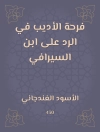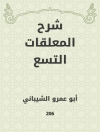A. B. Paterson’s ‘The Man from Snowy River’ stands as an iconic piece of Australian literature, encapsulating the rugged beauty and harsh realities of the Australian outback. Written in a masterful narrative style marked by vivid imagery and rhythmic verse, the poem captures a heroic tale of horsemen and bushrangers, reflecting the nationalistic spirit and the romanticized vision of rural life in late 19th-century Australia. Set against the spectacular backdrop of the Snowy River region, Paterson’s work immerses readers in the landscape, culture, and folklore that define Australian identity. A. B. Paterson, also known as Banjo Paterson, was a pioneering Australian bush poet with deep roots in rural life. His experiences as a pastoralist and his extensive travels across Australia informed his portrayal of bush landscapes and characters. Born in 1864, Paterson’s profession as a lawyer combined with his passion for poetry allowed him to articulate the ambitions and challenges of Australian life, making his work resonate with authenticity and national pride. This timeless classic is highly recommended for readers interested in Australian heritage and those seeking a captivating blend of action and lyrical beauty. ‘The Man from Snowy River’ not only entertains but also provides profound insights into the enduring spirit of a nation forged in the wilderness.
Over de auteur
Andrew Barton ‘Banjo’ Paterson was an Australian bush poet, journalist, and author born on February 17, 1864, in rural New South Wales. He grew up in the bush and later worked as a lawyer, but he is most renowned for his significant contribution to Australian literature. Paterson’s poetry is noted for its vivid imagery, rhythm, and romanticism of life in the Australian outback. He wrote under the pseudonym ‘The Banjo’, named after a favorite horse. Paterson’s work often celebrated the horse and the Australian countryside, both of which were integral parts of his early years. ‘The Man from Snowy River’ is perhaps his most famous poem, published in 1890, and is a classic representation of the Australian bush ethos. It tells the story of a horseback pursuit to recapture the colt of a prized racehorse that joined the wild bush horses. Paterson’s narrative style within this poem captures the adventurous spirit and the beauty of the harsh Australian landscape. His literary work extends beyond poetry with pieces such as ‘Waltzing Matilda’, which has become an unofficial Australian national anthem, showcasing his ability to tap into the cultural consciousness of Australia. Throughout his career, Paterson also worked as a war correspondent, journalist, and editor, contributing extensively to the literary life of Australia. He passed away on February 5, 1941, but his work remains an enduring part of Australia’s cultural heritage (Barker, 1992).












